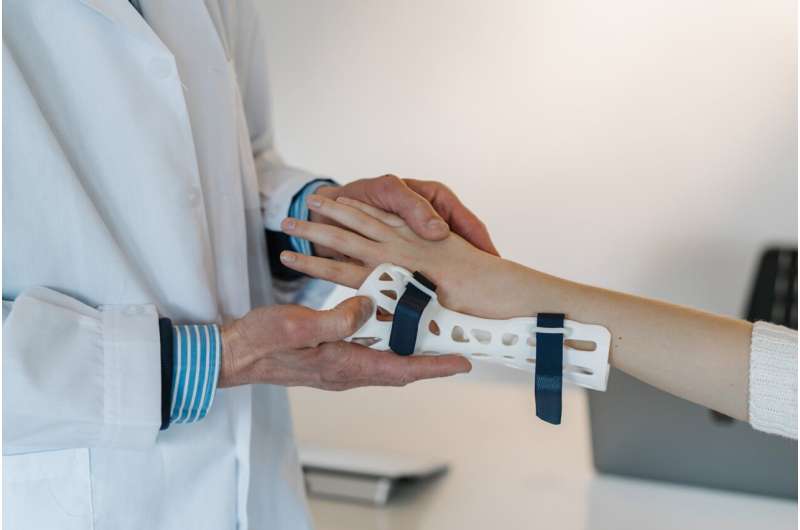Patient tracking to go with the flow

Patients admitted to hospitals in the future may find themselves equipped with a small ultrasound transmitter. With the help of their mobile phones, health care personnel will be able to keep track of where their patients are as well as any delays in their scheduled treatment.
“Patients arriving at hospital for an operation are normally prepped for surgery on a ward and then moved to the operating room for surgery. Following surgery, they are moved to the recovery and intensive care unit and then back to ward where they started,” says Professor Pieter Jelle Toussaint from the Department of Computer and Information Science at the Norwegian University of Science and Technology (NTNU).
The numerous steps in this process increase the risk of delays arising before, after or during surgery. It can be difficult for hospital personnel to maintain a reliable overview of what is going on where.
Inadequate notification systems
“At present, personnel find out about delays via telephone, pager, intercom or person-to-person interaction. Hospitals have no systems for notifying personnel via their mobiles when they cannot be reached by other means, or for providing updates on delays that may affect the rest of their schedule for the day,” Professor Toussaint says.
As a result, hospitals may not be using their resources efficiently. According to the professor, hospital employees employ a variety of individual strategies to cope with the many deviations from the planned schedule.
“Some set aside time between each operation to make room for delays. Others wait to go to the operating room until they have been notified that things are ready to go, because they know from experience that delays tend to arise.” he explains.
Will track both people and equipment
Dr Toussaint is heading the CoOperation Support Through Transparency (COSTT) project, which receives funding from the Research Council's Large-scale programme Core Competence and Value Creation in ICT (VERDIKT).
In order to gain deeper insight into the problems in the current system as well as the needs of medical personnel, researchers have been observing the staff in the operating room at Trondheim University Hospital. They have also accompanied personnel and patients as they have traversed the hospital in connection with different tasks or treatments. In addition, they have conducted interviews with representatives of various groups of health care personnel.
.jpg)
The objective is to design an advanced computer system which obtains information from an indoor positioning system (IPS) showing where patients, employees and equipment are located at any given time.
“We will tag both people and equipment with transmitters to keep track of their whereabouts. Everything is recorded automatically so that employees avoid having to register events on their own,” says Professor Toussaint.
Ultrasound
As part of the system, employees carry transmitters integrated into their I.D. cards while patients wear a transmitter on a neck chain issued upon admission to the hospital. The transmitters emit ultrasound signals, i.e. sound waves at frequencies beyond those audible to the human ear.
Sensors located in rooms throughout the hospital capture the ultrasound signals and relay the encoded information to the computer system. This makes it possible for anyone with access to the system, which has also been ported to mobile devices, to keep track of location.
Keeping better tabs on everything
The computer system is designed to make it easier for hospital personnel to coordinate operating room activities and to stay abreast of what is going on.
It will also be easier for patients and their visitors to find the information that they need. For example, screens mounted in waiting rooms will allow parents to see whether their child’s surgery is going according to schedule.
A Danish tracking system already in use in operating rooms has served as the starting point for the researchers. The system, consisting of screens located in operating rooms and a scheduling room, automatically generates messages and sends them to an employee’s smart phone. There is no IPS, however, and the researchers in the COSTT project are seeking to create a new user interface that improves on the way information is presented.
Customisable
One challenge facing the researchers is determining exactly what the staff need to know and then limiting the information displayed accordingly. If too much information is provided, employees could end up using more time than they save.
“Physicians and the different groups of nurses need different information relative to their different roles,” the professor explains. “Nurses working on the wards want to know when a patient can be expected back from surgery whereas surgical nurses need to be notified when surgery has been delayed and for how long.”
A standard principle of the system is that notifications are unnecessary as long as everything goes according to plan.
Artificial intelligence and learning
Researchers are also considering augmenting the system by including elements of artificial intelligence, including features for foreseeing delays and calculating their consequences for the schedule. This would put personnel in a better position to judge whether an operation should be postponed until the following day.
Over time, hospitals will have collected ample data to determine what percentage of their activities and patient treatments are carried out on schedule. This will give hospital coordinators a better basis for making more informed judgments with regard to mutual dependencies within the scheduling system and the ensuing need for resources.
















